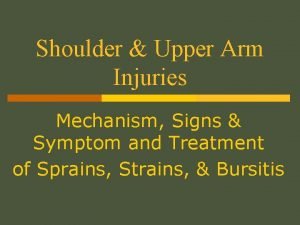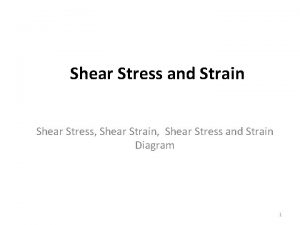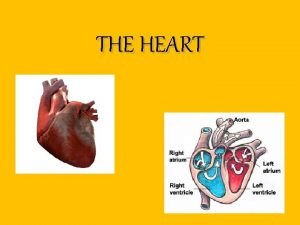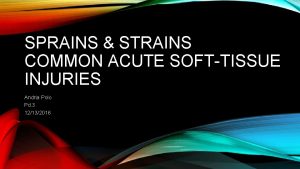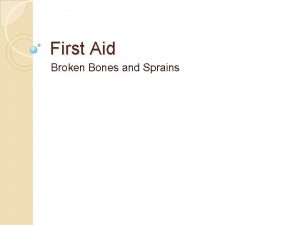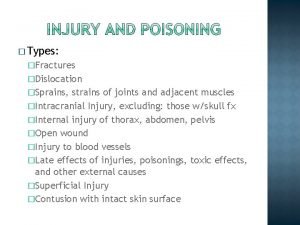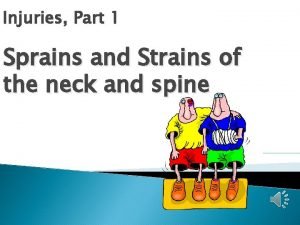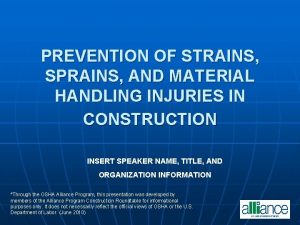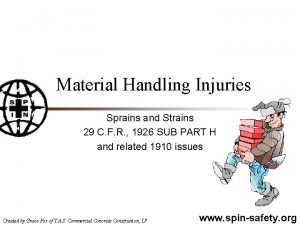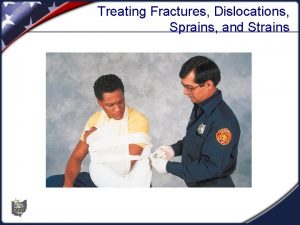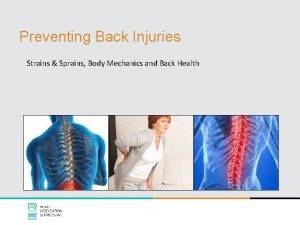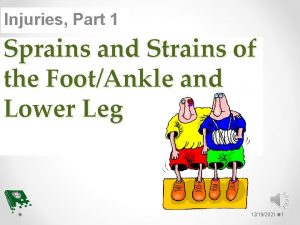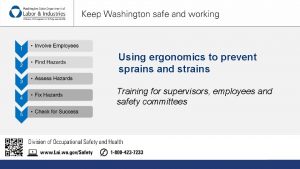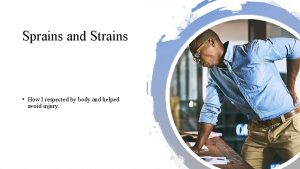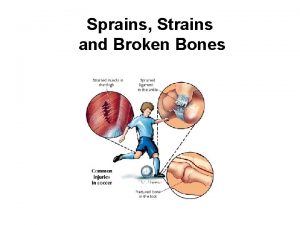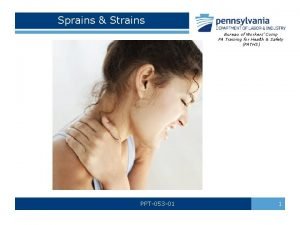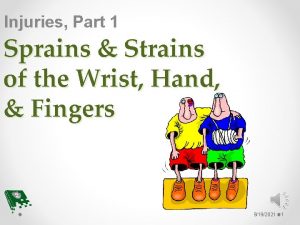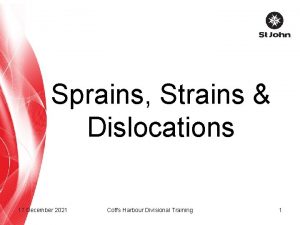Common Causes of Sprains and Strains in Your





















- Slides: 21

Common Causes of Sprains and Strains in Your Workplace and Some Solution Ideas

This slide show outlines… …some common causes of sprains and strains in workplaces, and some ideas for reducing or eliminating them. Links to the following Power. Point slide shows can be found at the appendix at the end of this slide show. § A Five Step Process for Preventing Sprains and Strains § Recommended Exposure Limits for Preventing Sprains and Strains

By the end of this slide show, you will be able to… § Identify causes of sprains and strains in your workplace § Locate resources and contacts for more assistance

Sprains and strains Some job tasks can cause injuries from: § Lifting § Awkward postures § Forceful gripping or pinching § Repetitive motions & Intensive keying § Hand-arm vibration

Sprains and strains are occupational disorders of: • muscles • tendons • ligaments • joints • blood vessels • nerves They are also known as Work-related musculoskeletal disorders, or WMSDs

Hazards to watch for Lifting Awkward postures Forceful pinching, gripping Repetitive motion Intensive keying Hand-arm vibration

Lifting

To lower the risks of lifting… • Reduce the weight • Increase the weight (so people truly can’t lift the item) • Use mechanical assistance • Slide instead of lift • Team lift • • Avoid unnecessary lifting Use mobile storage Rotate to non-lifting tasks Bring loads as close to the body as possible before lifting them • Remove obstacles to reduce reaching • Place objects at a good working height

Awkward Postures

To lower the risk of awkward postures… • Raise, lower or tilt • Use an elevated work platform or the work for rolling stairs for easier access higher level work • Use a stool for lower level work • Use tools with longer handles • Alternate between • Limit overhead storage to bending, infrequently used kneeling, sitting, items and squatting

Forceful Pinching and Gripping

To lower the risk of forceful gripping… • Use lighter tools • Suspend the tool with tool counter-balancers • Use longer lever arms on tools • Use hand trucks, carts or conveyors instead of carrying loads

To lower the risk of pinching… Change from pinch to grip: The upper box has cut out handles which allow a much more comfortable and less stressful grip on the box. a Power Grip: is up to 5 times stronger than a Pinch Grasp:

Reducing pinching… Change pinching to gripping

Repetitive Motion and Intensive Keying

To lower the risk of Repetitive Motion and Intensive Keying… • Eliminate unnecessary motions • Use power tool instead of hand tools (He’s using a power wrench rather than a ratchet. ) • Automate the task • Enlarge the job (Substitute some tasks that don’t include repetitive motions or keying. )

Hand-Arm Vibration A link to a Hand-Arm Vibration database is in the appendix at the end of this presentation. When searching for a low vibration tool, look for the lowest vibration level (VL).

To lower the risk of Hand. Arm Vibration… • Use anti-vibration gloves • Isolate the vibration from the user • Use low vibration tools

The Ergonomics Ideas Bank This is a searchable database of solutions to help prevent workplace sprains and strains A link to this web page is in the appendix at the end of this presentation

Appendix - Links More slideshows: Ergonomics Awareness A Five Step Process for Preventing Sprains and Strains Recommended Limits for Preventing Sprains and Strains Helpful tools: Hand-Arm Vibration (HAV) – A Step by Step Guide to Evaluate & Control Risk Contact an L&I ergonomist

Help from L&I at no cost to you We offer free, confidential consultations to help you prevent sprains and strains in your workplace. To learn more: § Click here to email us – Ergonomics@Lni. wa. gov § Call – (360) 902 -5450 § Click here to visit our website – http: //www. lni. wa. gov/Safety/Consultation/ VPP: The Standard of Excellence in Workplace Safety and Health
 Sprains and strains
Sprains and strains What are the greatest strains on walter and ruth's marriage
What are the greatest strains on walter and ruth's marriage Shear stress definition
Shear stress definition Proximate cause and ultimate cause
Proximate cause and ultimate cause Animal behavior biology
Animal behavior biology Lcm of 48 and 60
Lcm of 48 and 60 Common anode and common cathode
Common anode and common cathode Factor tree of 28
Factor tree of 28 How to find lowest common factor
How to find lowest common factor The gcf of 12 and 18
The gcf of 12 and 18 Multiples of 9 and 21
Multiples of 9 and 21 Faulty
Faulty Give us your hungry your tired your poor
Give us your hungry your tired your poor What causes the burning sensation in your muscles
What causes the burning sensation in your muscles What is the difference between ideal self and actual self
What is the difference between ideal self and actual self Your conscious awareness of your own name
Your conscious awareness of your own name 2021 graduation songs
2021 graduation songs Causes and effects of the french and indian war
Causes and effects of the french and indian war Coping with gay loneliness
Coping with gay loneliness Stop blaming your parents for your problems
Stop blaming your parents for your problems What side is your heart on
What side is your heart on A poem is a little path
A poem is a little path
